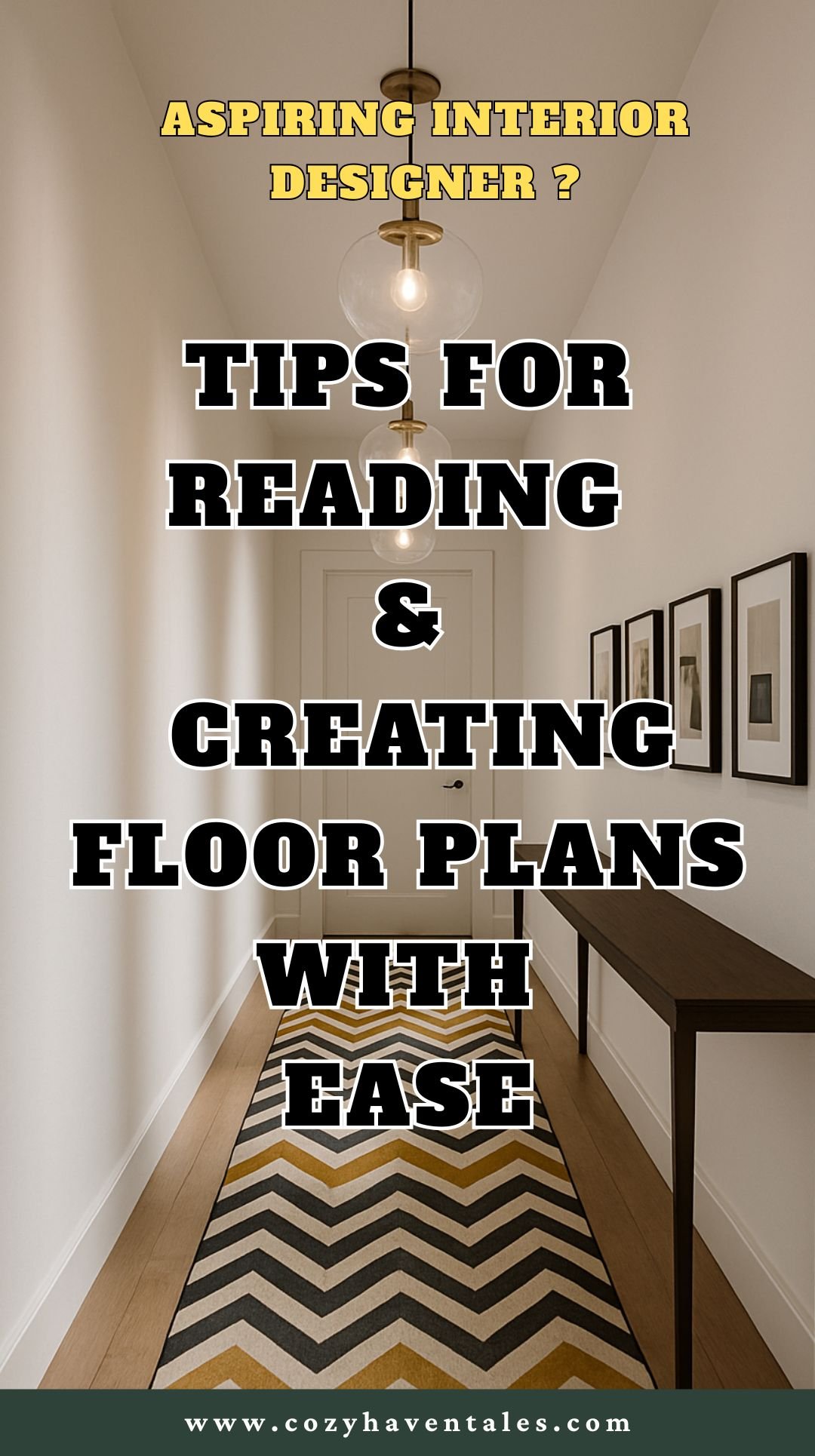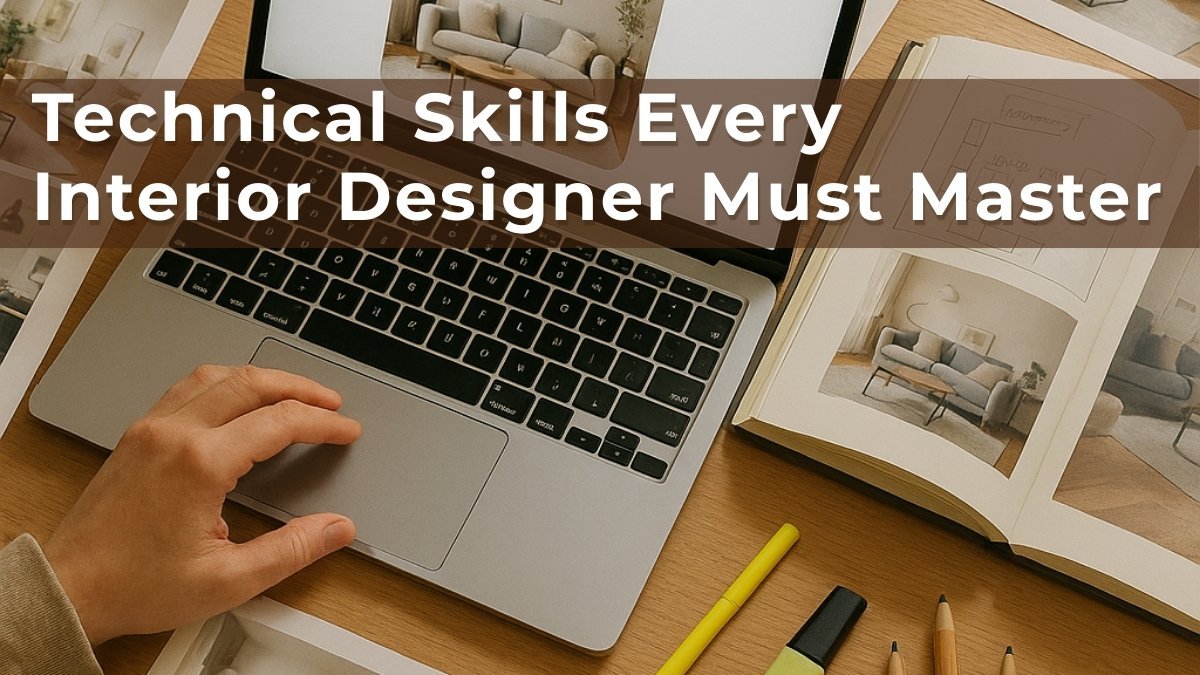For many design students and interns, the first encounter with a floor plan can feel overwhelming. The lines, symbols, and numbers don’t look like a home—they look like a puzzle. It’s common to feel unsure about where to begin or how to translate all of that information into a design.
But as you grow in practice, floor plans stop being intimidating. They transform into maps of possibilities, showing you how people will live, move, and interact in a space. Once you develop this skill, you’ll never walk into a room the same way again—you’ll begin to “see” its plan in your mind.
For any aspiring designer, mastering the ability to read and draw floor plans is one of the most important foundations of professional practice.
Readers Also Enjoyed:
- Principles of Interior Design to Make a Room Feel Just Right
- How to Find Your Personal Design Style—and Finally Love Your Home
- Paint Colors to Avoid When Selling Your Home
Why Floor Plans Matter for Students and Interns
A floor plan is not just a drawing; it’s a language of design communication. When you’re working on projects, whether in school or during internships, your ability to read and draw plans will directly affect how well you communicate with mentors, clients, and contractors.
- Clarity of Ideas: Instead of saying “a big kitchen,” you can show precise dimensions and placement.
- Problem-Solving Tool: A door swing drawn incorrectly may look minor on paper, but on site it can block circulation or furniture. Spotting such issues early saves time and money.
- Scale and Reality Check: Floor plans remind you that design is not only about style but also about proportion and function.
💡 Example for interns: Imagine you’re asked to prepare furniture layouts for a 12′ x 12′ bedroom. Without a floor plan, you might suggest a king-size bed, but once you draw it to scale, you’ll realize there’s hardly any room for side tables or circulation.
How to Read Floor Plans
If you want to grow as a designer, treat every floor plan as a story. Here’s how to read them step by step:
1. Recognize the Structure: Walls, Doors, and Windows
Walls are always the boldest lines. Doors are shown with arcs to indicate their swing, while windows appear as gaps or thinner rectangles within walls.
🔎 Practice for interns: Take any plan in your office or classroom, and trace over walls, doors, and windows in different colors. This exercise trains your eyes to quickly separate the “bones” of the space.
2. Understand Measurements and Scale
Numbers on plans indicate exact dimensions. These may be in feet/inches or metric units, depending on region. Plans are usually drawn to scale (1:50, 1:100, etc.), meaning a fixed ratio represents real-world sizes.
💡 Example: A living room shown as 15’ x 18’ gives you a mental picture: will it comfortably fit a 7-foot sofa and still leave walking space?
3. Learn Common Symbols
Every plan uses standard symbols. As an intern, being fluent in these makes you look confident and professional.
- Outlets → small square with a cross
- Lights → circle with a line or cross
- Plumbing fixtures → sink, WC, shower marked clearly
- Furniture outlines → scaled rectangles, circles, or shapes
🔎 Practice tip: Keep a notebook of symbols you encounter during your internship. Over time, this becomes your personal reference guide.
4. Analyze the Flow of Movement
Design is about experience, not just structure. As you read a plan, imagine yourself walking through it.
- Is circulation smooth?
- Are doors placed logically?
- Does the layout feel private where it should (like bedrooms) and open where needed (like living rooms)?
💡 Bad example: A bathroom door opening into a dining room.
💡 Good example: Entryway leading naturally into the living space, with private areas tucked away.
How to Draw Floor Plans
Reading plans is half the journey; drawing them is what trains you to think like a designer.
1. Begin with Graph Paper and Pencil
Before jumping into software, practice sketching by hand. Use graph paper where each square represents one unit (e.g., 1 foot). This builds your understanding of proportion.
🔎 Student exercise: Draw your hostel room, bedroom, or studio apartment on graph paper. Mark measurements accurately.
2. Keep Lines Neat and Accurate
Even in practice sketches, neatness matters. Crooked lines or guesswork dimensions won’t help you grow. Learn to measure properly with a tape and transfer it precisely onto paper.
3. Mark Fixed Elements
Always indicate windows, doors, columns, and plumbing points. These are the non-negotiable anchors around which your design develops.
💡 Example: Forgetting to draw a window in your plan might lead you to place a wardrobe in front of it—something impractical on site.
4. Add Furniture to Scale
Test your layouts by placing furniture outlines inside your plan. Whether you sketch freehand or cut out scaled pieces, this step reveals how functional the space really is.
🔎 Practice tip: Try two versions of a living room—one with a sectional sofa, one with two single couches. Compare which layout feels more open and practical.
Tools You Should Explore
As a student or intern, learn both manual and digital tools.
- Manual: Scale ruler, tracing paper, drafting templates.
- Beginner-friendly software: Floorplanner, RoomSketcher.
- Professional software: AutoCAD, SketchUp, Revit.
💡 Mentor advice: Even if your internship studio uses advanced software, don’t skip hand-drawing. It sharpens your sense of space, proportion, and design intuition.
Common Mistakes Interns Make (and How to Avoid Them)
- Forgetting door swings → causes circulation clashes.
✅ Always mark arcs for every door. - Not checking scale → results in impractical furniture layouts.
✅ Confirm scale before starting. - Overloading with furniture → looks cramped and unrealistic.
✅ Prioritize circulation. - Ignoring fixed services → placing furniture where plumbing/electrical points don’t allow.
✅ Study the MEP (mechanical, electrical, plumbing) layers carefully.
Practice Assignments for Students
- Redraw your classroom or studio floor plan.
- Visit a café, measure roughly, and sketch its layout.
- Download a sample builder’s plan and test different furniture arrangements.
- Present one plan to your mentor with two alternate layouts—practice explaining your choices.
Wrapping Up
For interns and students, mastering floor plans is the first big step from theory into practice. These drawings may look technical at first, but with experience, you’ll realize they are stories of how people live in space.
Once you can read them, you’ll notice design details in every building you enter. Once you can draw them, you’ll gain the power to test, adjust, and present your design ideas with confidence.
And that’s when you begin thinking—and working—like a professional interior designer.







